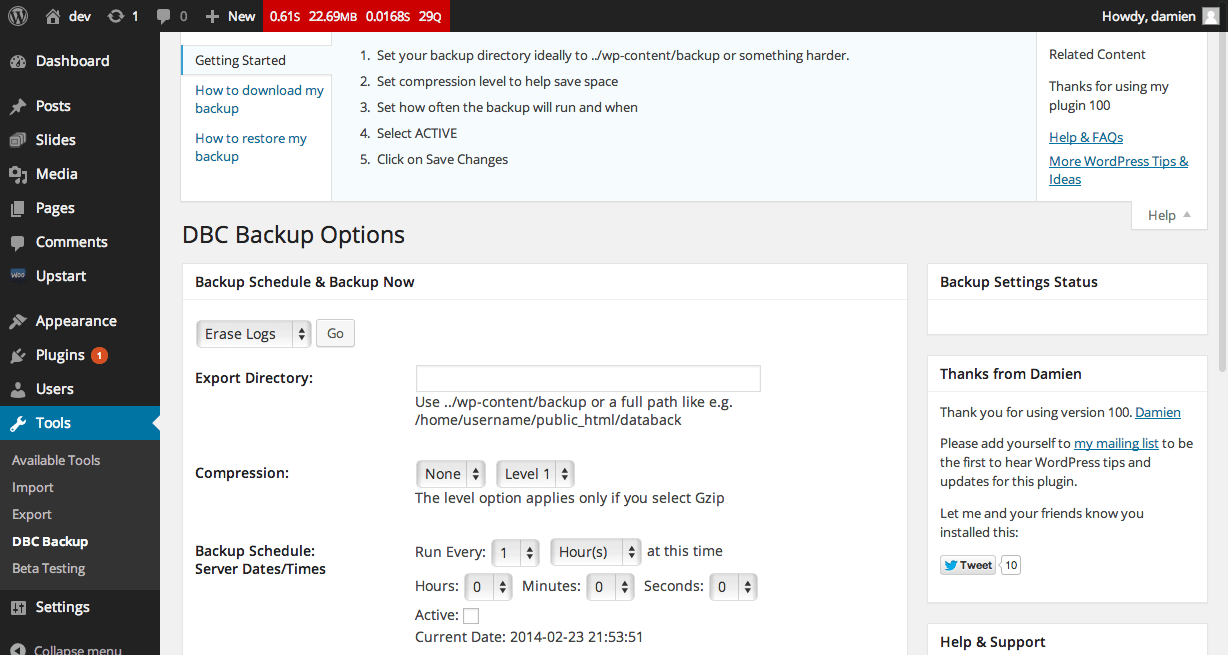

Depending on your setup, it may be desirable or undesirable. The above command uses PHP-FPM (or PHP-CGI). We will first need to disable WordPress default wp-cron behaviour by adding the following line to the wp-config.php file: define('DISABLE_WP_CRON', true) Setting up a real cron jobįrom your Linux terminal, first, open crontab: crontab -e Because of this, we highly recommend running wp-cron via Linux crontab rather than WordPress’s default way, irrespective of the size or traffic of your site. Thus not interfering with any visitors’ page requests. Using crontab, WP-cron is run by an independent PHP process. So while you can’t be 100% sure when your task will run, you can be 100% sure that it will run eventually. With WP-Cron, all scheduled tasks are put into a queue and will run at the next opportunity (meaning the next page load). With the system scheduler, if the time passes and the task did not run, it will not be re-attempted.

Using the WordPress API is a simpler method for setting scheduled tasks than going outside of WordPress to the system scheduler.However, many hosting services are shared and do not provide access to the system scheduler. WordPress core and many plugins need a scheduling system to perform time-based tasks.To disable the WordPress Cron, add the following to your wp-config.php file, just before the line that says “That’s all, stop editing! Happy blogging.” Note: This disables it from running on page load, not when you call it directly via wp-cron.php. This runs on a pre-defined schedule and is even recommended in the official Plugin handbook. If a site doesn’t have a lot of traffic, schedules could be missed due to the fact that no one has loaded a page.Ī better approach is to disable WP-Cron and use the system cron instead. If a site doesn’t have enough PHP workers, sometimes a request will come in, WordPress will spawn the cron, but the cron has to wait for the worker, and therefore just sits there. By default, the wp-cron.php fires on every page load, which on high-traffic sites can cause problems. First off, it’s important to understand that WP-Cron is not a real cron job, it’s simply what WordPress has created to mimic what a system cron does. Because of this, we’ve seen a lot of performance issues with the WordPress built-in Cron handler: WP-Cron. We deal with a lot of high-traffic and demanding sites at Brixly.
#Enable wordpress cron backup buddy how to#
So today we’ll show you how to disable WP-Cron (wp-cron.php) and instead use a system cron for faster performance. However, depending on the amount of traffic to your site, using the built-in cron handler can actually start to impact your page load times. In WordPress, this is handled by WP-Cron, which is used to simulate a system cron. Some examples of a WordPress cron job might involve scheduling a post to publish, checking for updates, or a backup plugin running on a predefined schedule.

CRON jobs are used to schedule tasks at periodic fixed times, dates, or intervals on your WordPress site.


 0 kommentar(er)
0 kommentar(er)
